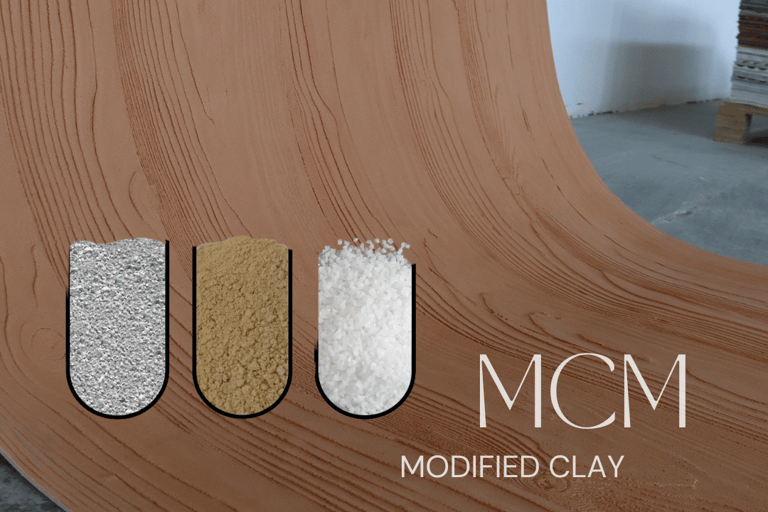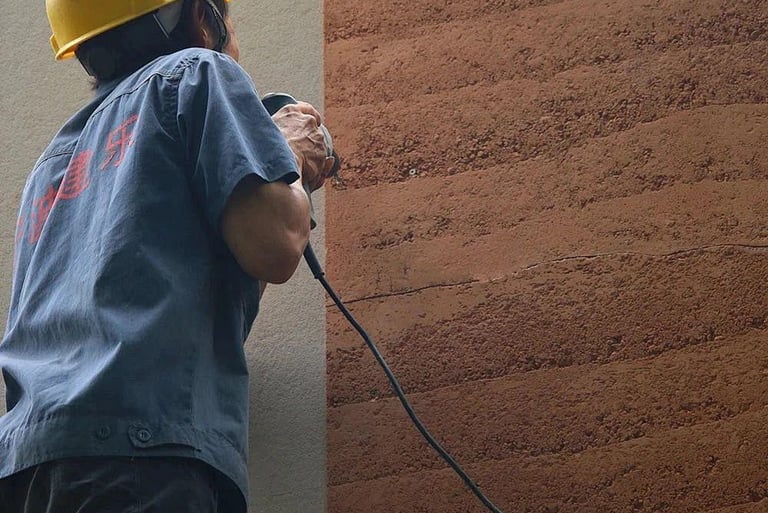
To be continue...
A new innovative material different from others
Frequently asked questions for Sinoflexistone
Why is it said that sinoflexistone is considered a green and environmentally friendly material?
Sinoflexistone is considered a green and environmentally friendly material because it is made by modifying widely available natural materials such as soil and stone powder into a form of modified soil. This modified material is then delivered to soft stone molding equipment, where, under controlled temperature conditions, molecular cross-linking occurs, assisted by precision laser-carved molds to form various soft stone products. These products can later be reverted back into soil through physical and chemical processes, allowing them to be used for farming. This aligns with the principles of sustainable development and ecological balance.
Can sinoflexistone(soft stone) products be bent freely?
Sinoflexistone products, except for those with excessively strong surface textures, can only be bent to a small extent. For flat types, such as travertine or rammed earth, the maximum bending curvature allows wrapping around a column with a diameter of 20 cm. It is important to note that while the product can bend, it cannot be folded, as folding will cause it to break. After all, the product is made of soil and stone powder, without any plastic components, so excessive bending will lead to cracking.
Considering the principle of thermal expansion and contraction, is it necessary to leave gaps?
This is one of the advantages of sinoflexistone compared to tiles. There is no need to leave gaps due to thermal expansion and contraction. Instead, considerations are more about whether the installation is indoors or outdoors, whether there is water infiltration (the product itself is waterproof, but water can seep through gaps, so waterproof filling is necessary), and aesthetic factors. Because the product is made from soil (which has extensibility and stable properties), it bonds seamlessly with the substrate once applied. To date, there have been no cases of warping or even cracking, unless the substrate itself breaks. If the substrate has issues, the surface layer, regardless of the material, will also be affected.


What is the carbon emission of 1m² of sinoflexistone tile?
The carbon emission of 1m² of Sinoflexistone tile is 1.02kg CO₂e, which is 95.4% less than that of traditional ceramics and 98.63% less than that of natural stone.


Are sinoflexistone veneer water-resistant and moisture-proof?
Yes, they perform exceptionally well in water resistance and moisture-proofing. The main raw materials are natural inorganic substances such as stone powder and clay, which are composite-modified to change their molecular structure, resulting in a softening coefficient of 0.95 (the higher the coefficient, the better the water resistance). Even after prolonged soaking or in humid regions, there will be no yellowing, fading, cracking, or detachment.
What are the performance advantages of sinoflexistone tiles compared to other materials?
Compared to glass and traditional tiles, sinoflexistone tiles offer richer and more three-dimensional decorative effects with greater artistic appeal. They outperform various coatings in weather resistance and durability, with superior decorative effects. Compared to dry-hanging stone or aluminum panels, they offer higher safety and significantly reduced construction costs. Additionally, the lightweight sinoflexistone combined with multi-layer fiberglass mesh enhance toughness, making them less prone to damage or breakage, especially suitable for high-rise buildings.
About Us
As a new brand under HomevipoTech HK, Sinoflexistone is specializing in soft stone production.The state-of-the-art Sinoflexistone factory, strategically located in Zhaoqing City, covers a sprawling area of 120,000 square meters and is repurposed from an existing ceramic manufacturing facility. With plans to establish 12 advanced soft stone production lines, the factory aims to become the largest and most sophisticated soft stone manufacturing base in South China, solidifying Homevipotech’s position as a leader in innovative building materials.
Contact sophie
Any inquiry
info@sinoflexistone.com
+86 18688226660/18928543384
© 2025. All rights reserved.




